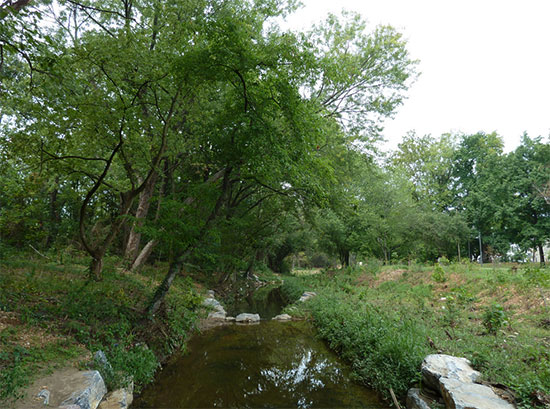Restoration of urban stream has big impact on D.C. economy
A new analysis of an Anacostia River tributary documents the local value of restoring urban streams.
Restoring urban streams can help restore urban communities, according to a new analysis from the U.S. Geological Survey (USGS).
In a report released last week, the USGS documents the contributions that the restoration of an Anacostia River tributary made to the Washington, D.C., metropolitan area, from the creation of jobs to the creation of open space for residents. The yearlong restoration of a 1.8 mile stretch of Watts Branch is one in a series of case studies highlighting the economic impacts of restoration projects supported by the Department of the Interior.

Image courtesy U.S. Fish and Wildlife Service Northeast Region
Completed in 2011, the efforts to restore Watts Branch included the restoration of an eroded stream channel and the relocation and improvement of streamside sewer lines. The work—a collaboration between the U.S. Fish and Wildlife Service, the National Park Service, the U.S. Environmental Protection Agency, the District Department of the Environment, the D.C. Water and Sewer Authority and others—reduced erosion, improved water quality and wildlife habitat, and provided local residents with an urban sanctuary where green space is otherwise limited.
The restoration project also accounted for 45 jobs, $2.6 million in local labor income and $3.4 million in value added to the District of Columbia and 20 counties in Virginia, West Virginia and Maryland.
According to the EPA, $3.7 million in project implementation costs were funded by multiple agencies and organizations, including the EPA and National Fish and Wildlife Foundation.
Read more about Restoring a Stream, Restoring a Community.

Comments
There are no comments.
Thank you!
Your comment has been received. Before it can be published, the comment will be reviewed by our team to ensure it adheres with our rules of engagement.
Back to recent stories